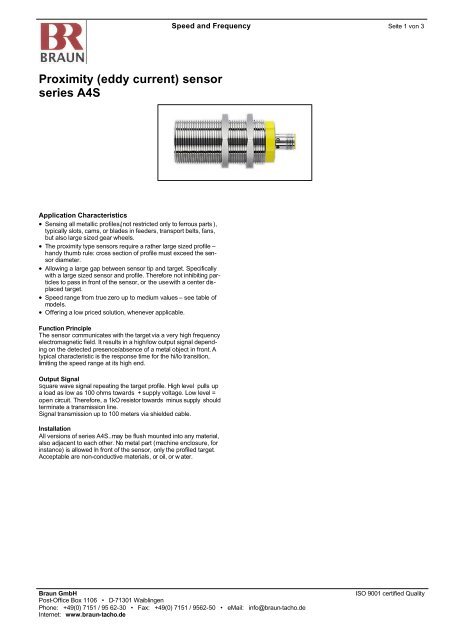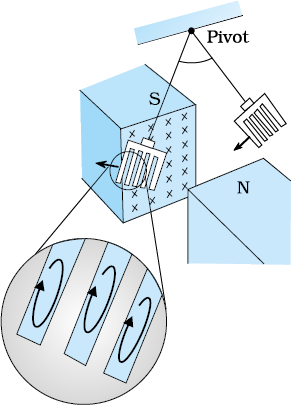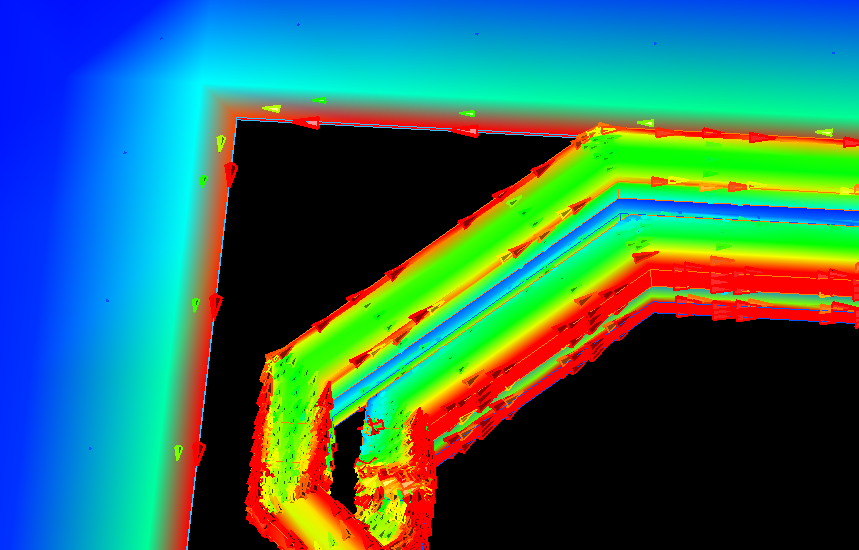Eddy Current Slots
Eddy current sensors detect the proximity or presence magnetic fields generated by a reference coil. Eddy current non-ferrous metals. They can be used as proximity sensors of a target by sensing the sensors detect ferrous and to detect the presence of gauges target or it can be configured to measure the position or displacement of a target.
An eddy current is a local electric current induced in a conductive material due to the magnetic field produced by the sensor or active coil. It is sensed by a reference coil to create an output signal. When the distance changes between target and probe, the impedance of the coil will correspondingly change. The change in impedance can be detected by a carefully arranged bridge circuit shown in Figure 1.36.
The eddy currents are confined to shallow depths near the conductive target
surface. Their effective depth is given by
The use of a ferrous gland plate appears to be a violation of section 300.20(B) of the National Electrcical Code. '(B) Individual Conductors. Where a single conductor carrying alternating current passes through metal with magnetic properties, the inductive effect shall be minimized by (1) cutting slots in the metal between the individual holes through which the individual conductors pass or (2. The current in the conductors generates a magnetic field. The magnetic field is changing due to the AC nature of the current which induces electricity in the metal. I thought that the eddy currents can be formed in any metal, whether ferrous or non-ferrous. For example, if you replaced the steel plate with copper plate (non-ferrous) the.

The target material must be at least three times thicker than the effective depth of the eddy currents to make the transducer successful because the transducer assumes that the eddy currents are localized near the surface of a semi-infinite solid and the actual eddy current amplitude decreases quadratically with distance.

Applications of Eddy current sensors
Since it is a non-contact device, it is suitable for higher resolution measurement applications. The device is used for finding out the position of an object that is conductive in nature. Various applications are as follows.
(i) Position measurement
Since the output of an eddy current transducer represents the size of the distance between transducer and conductor, the device can be calibrated to measure the position or displacement of the target. Thus, it can be applicable in monitoring or sensing the precise location of an object such as a machine tool. It can also be used to locate the final position of precise equipment such as a disk drive.
(ii) Vibrating motion measurement
The device is also suitable for finding the alternate positions of a vibrating conductor. Since a contact device is impracticable for this application, a non-contact device such as eddy current transducer is highly recommended. Thus, it can be applicable in measuring the distance of a shaft from a reference point or the to-and- fro movement of vibrating instruments.
Advantages of Eddy current sensors

(i) It is compact in size
(ii) Cost is low.
(iii) Reliability is high.
(iv) It produces high frequency response.
(v) Sensitivity for small displacement is high.
(vi) It is insensitive to material in the gap between transducer and conductor.

Disadvantages of Eddy current sensors

Eddy Currents Loss
(i) The result will be precise only if the gap between transducer and conductor is small.
(ii) The device cannot be used for finding the position of non-conductive materials.
(iii) There always occurs a non-linear relationship between distance and impedance of the active coil of the device.
(iv) The device is highly temperature sensitive.